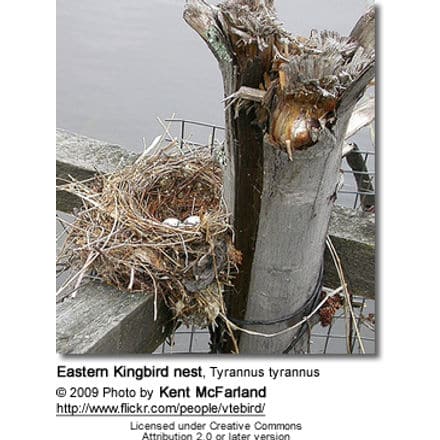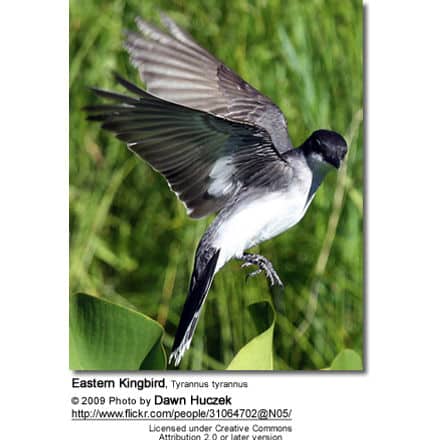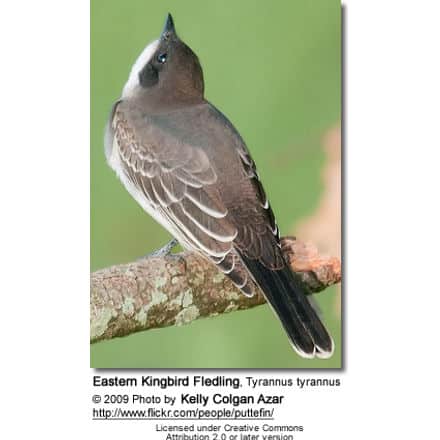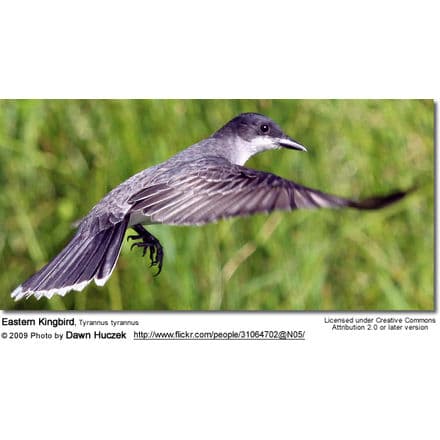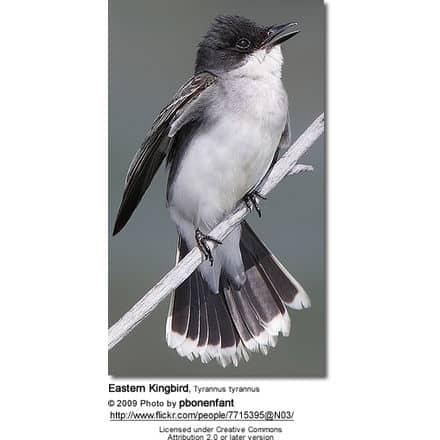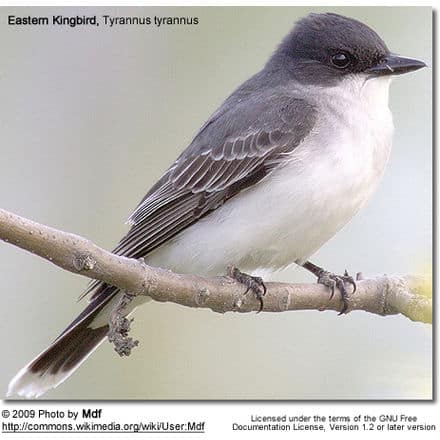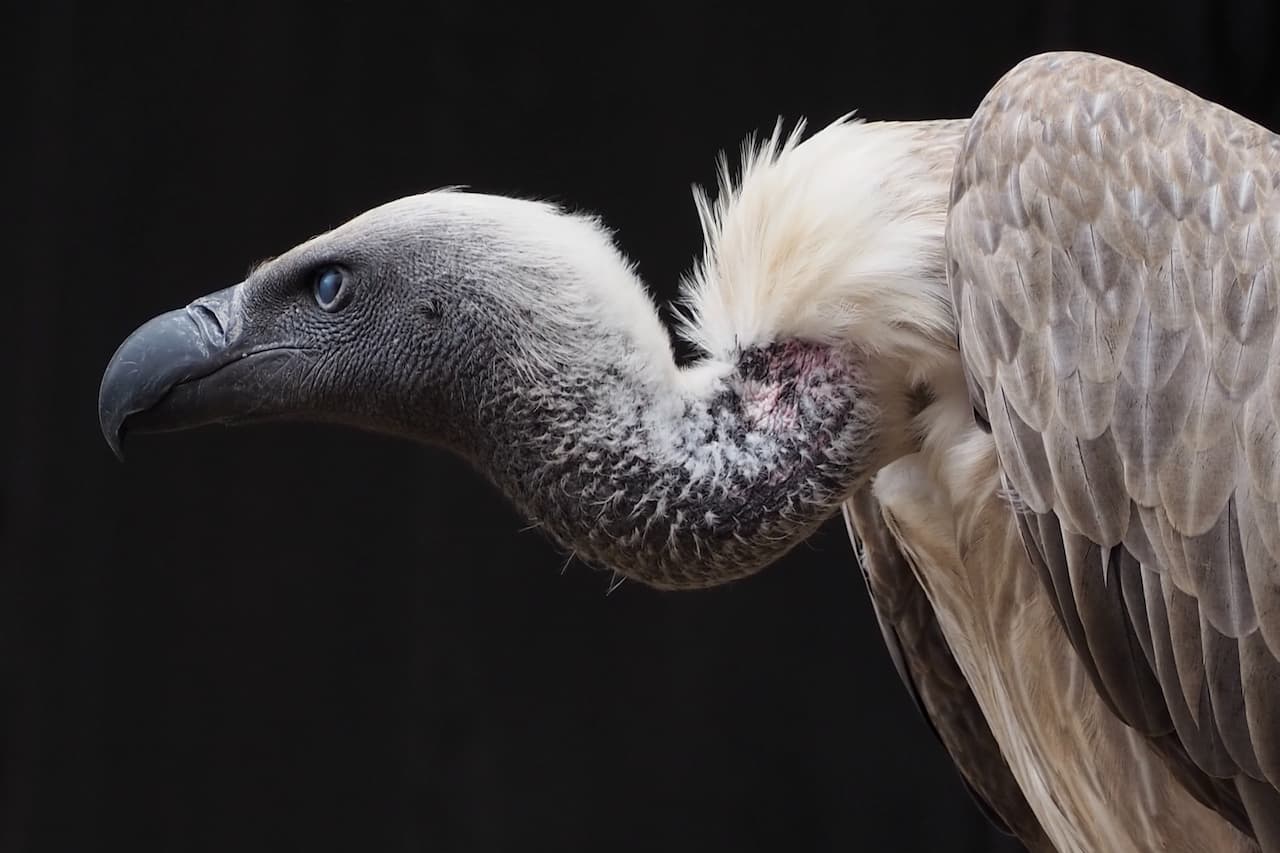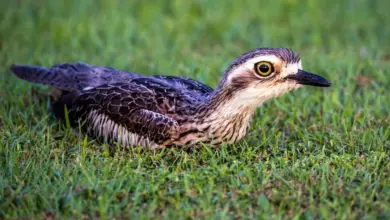Eastern Kingbirds
The Eastern Kingbirds, Tyrannus tyrannus – a large Tyrant flycatcher – can be found in the open areas across North America and migrate in flocks to South America.

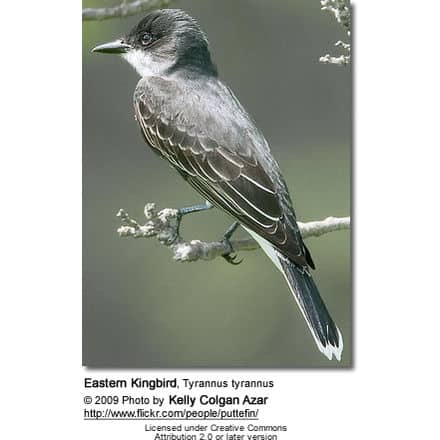
Description:
- Length: 6.75 inches
- Large head
- Often feeds by flying out to catch insects and then returning to the same perch
- Often perches in an exposed location, for example, the very top of a tree or on a fence
- Frequents open habitats: agricultural areas and streams
Adult:
- Black tail with white terminal band
- Blackish upperparts
- Whitish underparts
- Red crown patch rarely visible
Juvenile:
- Upperparts browner than adult
Similar Species:
The Eastern Kingbird is easily told from other similar kingbirds by its white terminal tail band and black and white plumage. Waxwings have yellow terminal tail bands.
Length and wingspan from: Robbins, C.S., Bruun, B., Zim, H.S., (1966). Birds of North America. New York: Western Publishing Company, Inc.


Nesting / Breeding:
They make a sturdy cup nest in a tree or shrub, sometimes on top of a stump or pole. These birds aggressively defend their territory, even against much larger birds.
Some Eastern Kingbirds place their nests in the open while others hide nests very well. It has been shown that those pairs that hide their nests well tend to be less aggressive towards intruders near the nest (perhaps relying on nest cover), while pairs that nest in the open tend to be more overtly aggressive to intruders. Both male and female participate in nest defense, but females may stay on well-hidden nests longer than females with open nests who may leave nests earlier to chase away predators. Those pairs nesting in the open may be able to see predators coming earlier and rely on aggressive behavior to protect their young. The aggressive behavior of Eastern Kingbirds has been shown to keep ravens and crows from finding experimental nests placed near kingbird nests. Similar experimental nests placed far from the kingbird nests were found far more often by crows and ravens.
Eastern Kingbirds in Southern British Columbia can nest in open fields; in shrubs over open water; high in tall trees and even in the tops of small stumps.
These birds remove cowbird eggs from their nests.
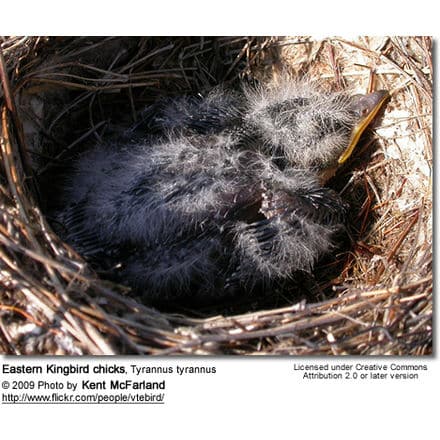
Diet:
They eat berries and fruits. They also catch insects in flight, sometimes hovering to pick food off vegetation.
Song / Call:
The call is a high-pitched unmusical chirp.
